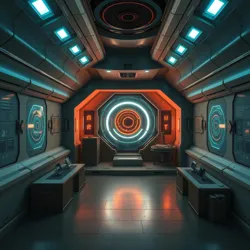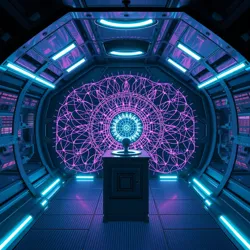Student Vorn 9

Student Vorn 9 was a notable participant in the Great Universal Creation Contest whose experimental work with quantum-based lifeforms in the Carina Nebula led to one of the most significant paradoxes in contest history. A graduate of the Advanced Universal Engineering Program, Vorn 9 was known for pushing the boundaries of conventional species design.
Academic Background
Vorn 9 studied under renowned Quantum Evolution Theorist Professor Zyxon 12 at the Nexus Academy for Gifted Celestials. Their groundbreaking thesis on trans-dimensional biology earned them early entry into the contest despite concerns from the Safety Protocol Board.
Contest Entry
Design Phase
Vorn 9's project focused on creating organisms capable of manipulating quantum states as a biological function. Using advanced reality stabilization fields, they successfully engineered entities that could exist in multiple quantum states simultaneously.
Evolution
The quantum-based organisms demonstrated unprecedented rates of evolution, achieving sapience within just 50,000 years. Their ability to process information at the quantum level led to rapid technological advancement.
The Paradox Incident
The project's ultimate fate became one of the most studied cases in contest history. The lifeforms developed faster-than-light travel capabilities, but in attempting to optimize their quantum processing abilities, they inadvertently created a temporal feedback loop that resulted in their self-erasure from existence.

Legacy
Although the project ended in failure, Vorn 9's research contributed significantly to:
- Quantum Biology Standards
- Temporal Containment Protocols
- Evolution Rate Theory
Scientific Impact
The paradox incident led to the establishment of new safety measures including: - Mandatory quantum state limiters - Enhanced temporal monitoring - Stricter controls on evolutionary acceleration
See Also
- Quantum Species Engineering
- Temporal Paradox Prevention
- Contest Safety Protocols
References
- Academy Research Archives
- Contest Incident Reports
- Quantum Biology Journal